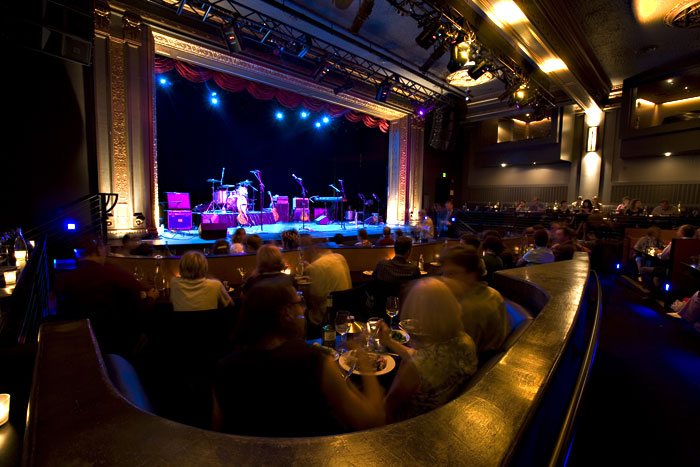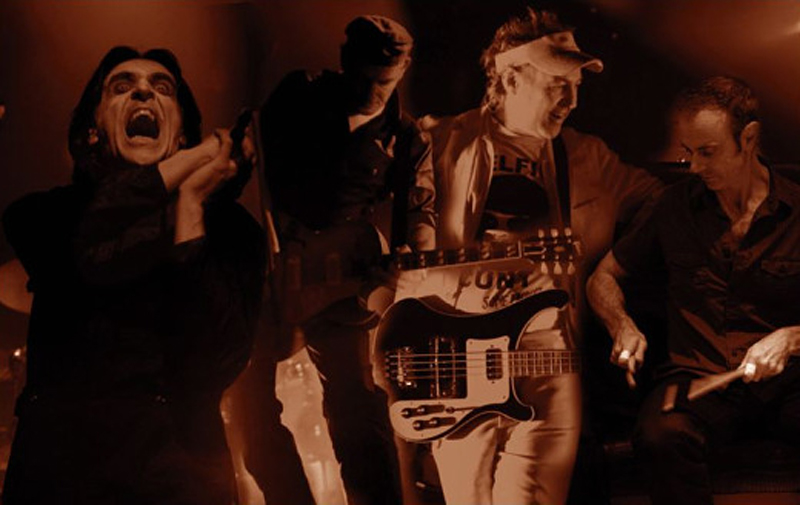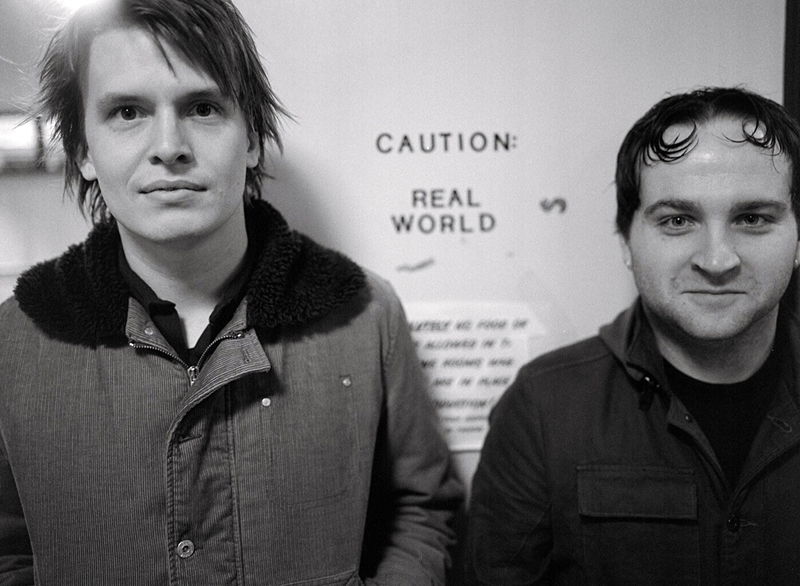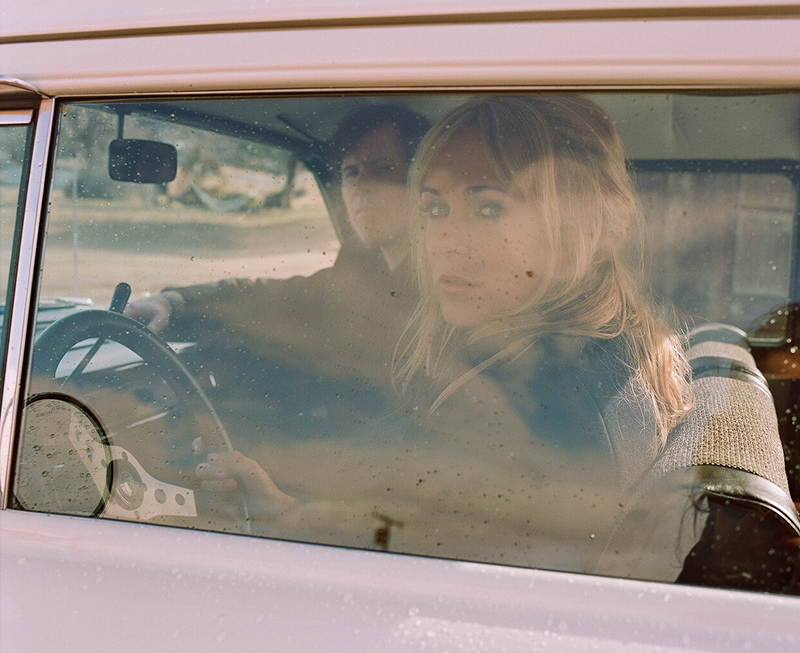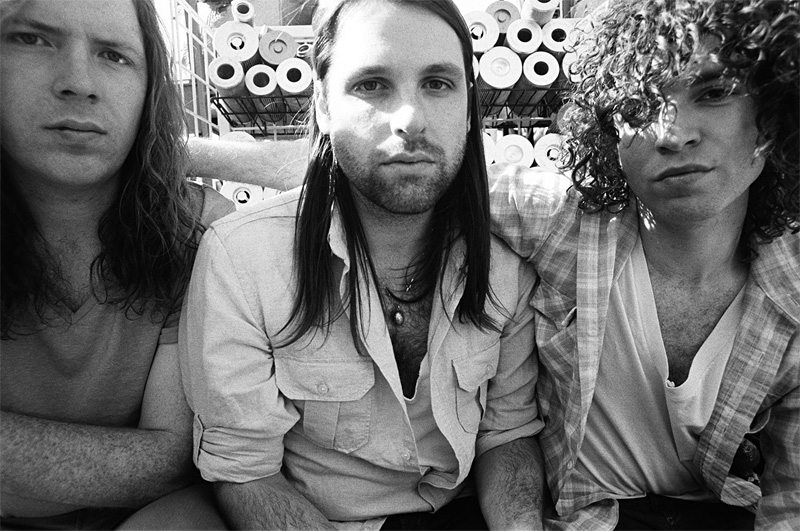As we’ve seen over the past year or two, Seattle music venues come and go with startling frequency, and economic downturns make keeping them in business a risky proposition. But the Triple Door–the intimate, swanky downtown joint housed in the old Embassy Theatre–has done exceptionally well since its 2003 opening, boasting one of the city’s most varied concert schedules. This week, the club celebrates its fifth anniversary by hosting two shows by blues-pop guitarist Robert Cray.
Much of the Triple Door’s success can be attributed to booker Scott Giampino, who after nine years as a publicist at Chicago’s legendary Touch and Go Records, and a two-year stint as talent buyer at the Showbox, moved to the Triple Door in the summer of 2004 and began to bring in an eclectic array of acts—everyone from Joanna Newsom to the Zombies to Tegan and Sara. We recently talked with Giampino about the Triple Door’s past, present, and future.
Seattle Weekly: What did you think of the club when you first saw it?
Scott Giampino: I saw it when they were building it. I came over with Chad [Queirolo] from the Showbox, that’s how I met [owner] Rick [Yoder], and we were like “Wow, that’s a crazy idea,” because they initially wanted it to be a jazz house. It took me a while, and then once I saw it all put together I was like, “Cool, I can get this.” But it was hard making the jazz scene work, especially with Jazz Alley being in town.
Yeah, I was curious if they had their sights set on competing with Jazz Alley at first.
Not necessarily competing, but they thought that this town was big enough to support two, which I dunno if it is. It’s a tough model, and I’m not sure if there’s that big of a community here to support it year-round. So when I came on, [booker] Andrew McKeag was here and I wasn’t doing it full-time, I was doing a lot more marketing/promo, but I also knew how to book shows and I had a lot of contacts that Andrew maybe didn’t have. And I was allowed to do stuff that was outside the box, like singer-songwriters or…one of the first shows I did was (Nick Cave collaborator) Blixa Bargeld.
At what point did they trust you to bring in acts outside what they envisioned? Did that happen right away?
No, it took some convincing. And then once there were a few shows that went off well—Sufjan Stevens was one, we did two days of him—they were like, “Oh, OK, there’s something here.” And so the leash got much longer and trust was granted much more easily. So yeah, it took a little while, maybe a good year or so.
A lot of people I’ve talked to, people who are used to seeing bands in dive bars or clubs like the Showbox or Neumo’s, say they were skeptical about going to the Triple Door because it seems so posh.
Yeah, I think there’s a level of respect placed on both the artist and the audience from the organization here, and people catch on to that right away. They’re not treated like cattle. Sure, it’s pricier here, but I don’t think people are gouged in any way. I think when this place first opened, there was some sort of [attitude] like, “Oh, it’s too cool, oh, it’s so fancy.” So it took a while for people to get the concept. But people will pay more money to see artists in a beautiful, intimate environment when they know there’s not a bad sight line, the sound’s gonna be good, they’re gonna be treated like humans, and they’re gonna see a quality artist. And the artist is gonna respond to that too. And with broadening the range of the stuff we were booking, that helped tremendously too.
Everybody talks about how amazing the sound is there.
Yeah. There’s certain things that don’t work here—one being super-loud rock. But anything that’s medium-loud to super-quiet works perfectly here because it’s a rectangle room, it’s an old theatre from the ’20s, so the sound is very easy to control. Plus we have a killer board and a great PA. I like the sound at the Showbox too, but its (musical) focus is narrower, and that’s not a bad thing. One of the beauties of this room is it fits singer-songwriters, blues, world, cabaret, comedy, roots, folk, and rock.
What would you like to do more of, or see happen in the future?
I’d like to do more multi-night runs with larger-profile acts like Diana Krall or Robert Plant or Elvis Costello. Or Tom Waits or Nick Cave. I realize a lot of that is [a] right-place, right-time [situation], and [depends on] the relationships you have with those agents or promoters, and a willingness on the part of the agent and the artist to take a chance and go outside of their normal box. But it comes down to economics—it’s a small room and sometimes they only have two weeks to tour the whole country, so why would they spend five days in one market? So you gotta get someone who “gets” the room. On paper, the capacity’s 270, so sometimes they’re thinking it’s something tiny, and it’s not—it’s 9,000 square feet. It’s a big space and there’s a lot of room for the sound to expand and the artist to stretch out. I’d also love to get some sort of Austin City Limits TV-type of thing going. Doing a show like that here would be a lot of fun.
Do you think the Triple Door has been embraced by the music community in the same way that, say, the Crocodile was?
Not immediately. But yes, yes I do. It took some time because we were swimming upstream. You know, people see a table setting and they think it’s highbrow, and then initially when the place started it was doing a lot of higher-end jazz stuff, so some people shied away from it, and I think there was a perception that it was uptight or whatever, but it’s not. It’s chill. It took a while for people to get it, but I’d say the music community is way behind it. Radio, the two weeklies, the Times and P-I—we’re a viable place for people to look for shows and things to do. That’s all you can ask for.
